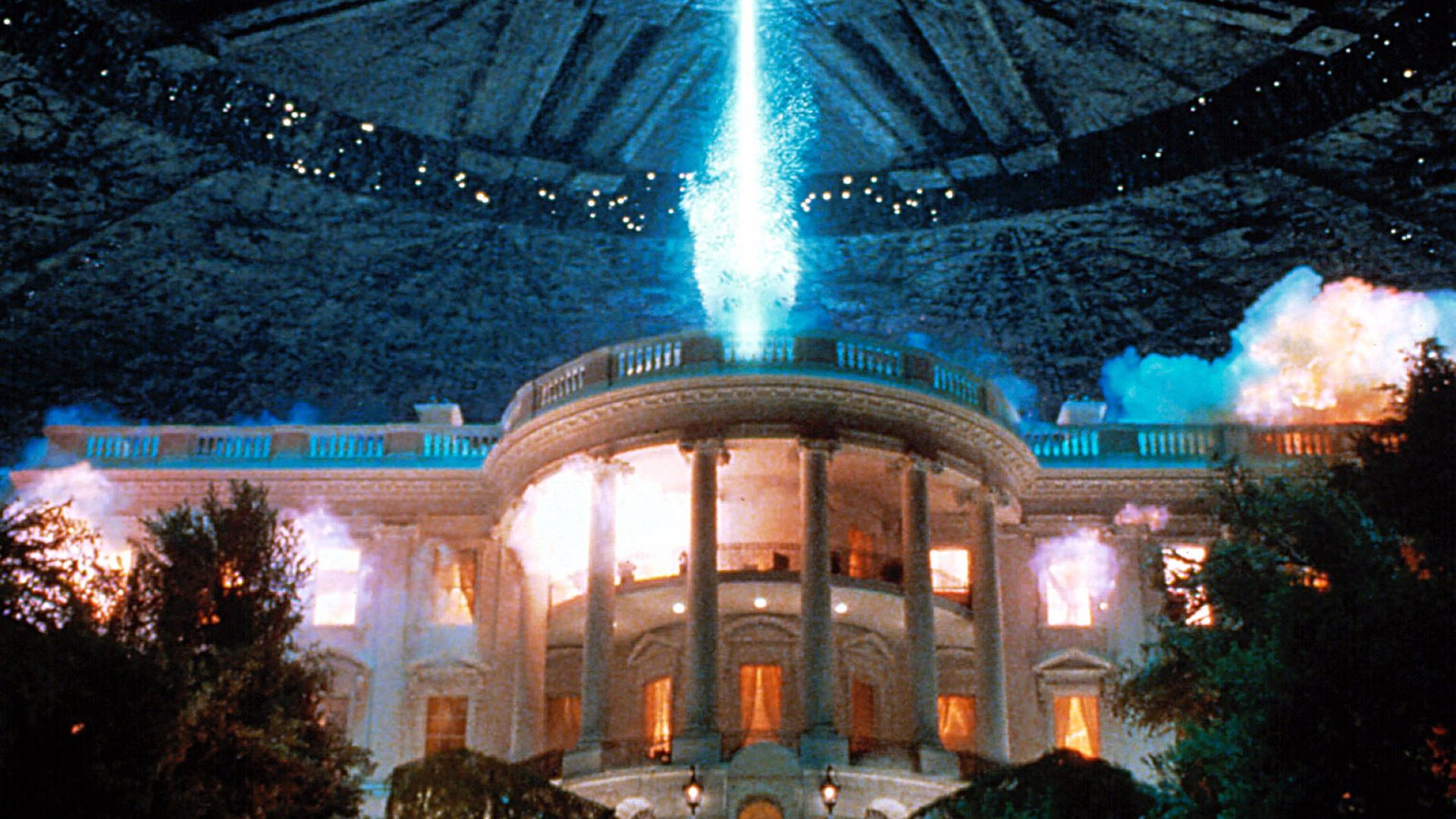
- Film
“Independence Day,” 1996: When the Aliens Broke the Box Office
The ’90s were a complex time for the industry – the dawn of digital, the slow death of physical effects, the transition from VHS to DVD, the rise of higher image and better sound in theaters, and the growth of the multi-screen multiplex.
It was a bonanza time for studios, and the audiences were eager to consume the new elements of the end of the century. It was also the affirmation of the indie film but that’s a different story.
It was the best time for the adventure/disaster movies that had been fascinating those wonderful people in the dark, from Charlton Heston parting the Red Sea to the massive destructions of ships and airplanes in the 80s.
Not by chance, the 1996 box office had one super winner: Independence Day, directed by Roland Emmerich, written and produced by Emmerich and Dean Devlin. From previews on July 2 to the end of the week, Independence Day had amassed $50.2 million.
In 12 days, the total became $150 million. At the end of the run, the sci-fi/disaster movie grossed over $817 million.
In the North American market, Independence Day had surpassed Twister (another adventure/disaster), holding the record for three years, until Star Wars: Episode I – The Phantom Menace toppled the aliens in 1999.
“I think the movie is a throwback to a lot of like old kind of movie genres,” Emmerich told the journalists of the HFPA on June 23, 1996. “It was a throwback more like to an old World War II movie – the patriotic feeling at the end – or like a disaster movie of the ’70s, like kind of an Irwin Allen disaster movie.”
According to Emmerich, the idea for Independence Day came to him fast and clear at a press conference in Europe for his previous film, Stargate. A journalist asked him why he made the story about aliens when it was publicly known that he didn’t believe in aliens.
“It’s a fact,” Emmerich shared with us. “But I also kind of find that they are a fascinating subject. And I always like the way American genre movies are, the westerns, science-fiction, fantasy, and horror movies. I liked them as a kid and there were not really many (of these movies) in Germany when I was a kid.”
The question and the answer, Emmerich said, triggered the idea that would become the 1996 top movie. “I turned to Dean (Devlin) and I said, ‘I think I have an idea for our next film.’ ”
From that point on, the birth of I.D. was lightning fast. Devlin proposed the concept of a massive, open attack from an alien squad on Earth. The duo developed the script in a month while vacationing in Mexico, in 1995, after the Stargate tour.
“That’s how we do it,” Devlin told us. “We leave town, we find a place, and every waking hour, all we do is work on the script. And we have very loud passionate arguments over the script.”
“The whole movie pretty much came to us in one day,” Emmerich added. “And that kind of tells us that there was something in the air or something.”
The I.D. script was centered on two key elements: the open attack on Earth by a massive army of aliens, and a response from the humans at the highest possible level, led by no less than the President of the United States.
“We didn’t want to make our President, President Clinton,” said Devlin. “Hollywood has a tendency to just glorify the Presidents that they like. We wanted to have a President that made sense in the movie and could capture this kind of Henry V feeling. We wanted a President that is able to fly a plane, lead troops to battle and make a speech.”
The speech, by the way, ended up being a variant of President Clinton’s after the Oklahoma City bombing.
“Everything moved very fast,” said Emmerich. “(Twentieth Century) Fox liked the story immediately and put it into production. It was the only summer movie that was not like constantly rewritten and like five writers brought in.”
Casting was fast and easy. Bill Pullman became President Thomas J. Whitmore, Jeff Goldblum was David Levinson, an MIT expert in satellites, and fast-rising star Will Smith as Captain Steven Hiller, a heroic Marine pilot.
In the wave of new digital resources, over 3,000 special effects shots were commissioned, mixing miniatures with computer-generated effects.
Principal photography began on July 28, 1995 in New York City, capturing the basic shots necessary for the future iconic aliens-versus-New-Yorkers scene. Utah, Nevada, New Mexico, and several locations in California completed the production.
“Fox supported us all the way,” Emmerich said. Their only dispute was the title. Inspired by Clinton and his speech, Emmerich and Devlin wanted Independence Day, while the studio opted for Doomsday, to emphasize the disaster-movie vibe. The filmmakers won, even with the obstacle of the title belonging to Warner Bros. (some negotiation fixed it.)
From that point on, 1996 was the year of Independence Day. Emmerich and Devlin were invited to the White House for dinner and a screening of the movie. “It was one of the most exciting moments in our lives,” Emmerich said.
According to the duo, the Clintons loved the picture, especially Bill Pullman’s President and, even better, his speech.
“It’s not really a horror movie,” Emmerich summarized. “It’s a catastrophe movie. It’s an invasion movie. It’s more like a disaster movie than a paranoia invasion movie. It’s like how people had fear of Communism in the ’50s. That’s closer to Invasion of the Body Snatchers and it moves like that.”